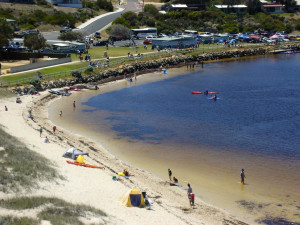The Present

The Moore River Estuary is one of the most pristine yet fragile ecological systems in the south west of Western Australia. Environmentally significant for its’ riverine vegetation, birds, fish and reptile life, it is also a significant tourism asset for West Australian, interstate and overseas visitors. This unspoilt, tranquil ambience is the main reason that hundreds of thousands of people visit Guilderton each year.
The sandbar usually opens several times a year, mainly in winter and spring when there have been heavy rains in the catchment. In summer, when flow reduces, the ocean waves build up the bar, damming the estuary and turning the estuary into a long freshwater lake.
The Moore River and the Hill River are the only two estuaries on the Swan Coastal Plain still in relatively unspoilt natural condition.
This estuary’s remnant vegetation is of vital importance, not only because of its’ scenic beauty, but also because it provides a habitat which allows native birds and wildlife to flourish. Another important function is that it holds the sand together with its roots and reduces wind speed, and therefore erosion, with its branches.
Tuart groves grow on both sides of the estuary between Guilderton and Caraban. There have been positive sightings of over 110 species of birds, and the estuary is within the range of another 100 species, including the endangered Carnaby’s Black Cockatoo. Kangaroos and emus abound and echidna and chuditch may occasionally be seen.


